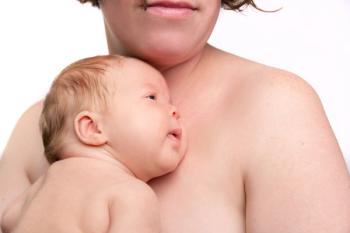
- Psychiatric Times Vol 27 No 11
- Volume 27
- Issue 11
Early Signs of Autism Spectrum Disorders
Recent attention has focused on identification of early signs that may identify children at risk for development of autism spectrum disorders (ASD).
Recent attention has focused on identification of early signs that may identify children at risk for development of autism spectrum disorders (ASD). Differences in feeding patterns, vocalization, and visual attention have been found between children with ASD and controls.
Feeding
Feeding patterns in children with ASD were examined by Emond and colleagues.1 This prospective study of children who were born between 1991 and 1992 in the Avon area of England used data from the Avon Longitudinal Study of Parents and Children. Seventy-nine children with ASD were compared with 12,901 controls. Maternal diet during pregnancy and breast-feeding rates did not differ between the ASD group and the control group. Questionnaires regarding the child’s feeding and frequency of eating different foods were completed by the main caregiver when the child was 6, 15, 24, 38, and 54 months.
Differences in feeding were found as early as infancy between the children in whom ASD was subsequently diagnosed and the controls. For the ASD group, mothers described their infants as slow feeders and to have a later acceptance of solid foods than the control group. At 15 months, the children with ASD were significantly more difficult to feed and more selective in food choice than were those in the control group. After 15 months, the diet of children with ASD was significantly less varied than that of the control group.
Children who had classic autism had the least varied diet compared with children who had other types of ASD. By 24 months, the dietary restriction of children with ASD progressed to the extent that these children were more likely to be eating a different diet than the rest of the family. By 54 months, more of the children with ASD (8%) compared with the control group (2%) were eating a special diet because of an allergy.
Also, higher rates of pica were found in children with ASD between 8 and 54 months than in the control group. With regard to specific foods, the children with ASD consumed fewer salads, vegetables, fresh fruit, sweets, and carbonated drinks than the control group. Despite their dietary restrictions, there were no weight differences between the children with ASD and the control group.
The authors suggested that when parents complain about their infants’ and toddlers’ feeding problems, food refusal, and limited food preferences, the clinician should consider the possibility of a diagnosis of ASD and inquire about core symptoms, such as communication and social deficits and a restricted range of interests.
Vocalization
New technology may allow for early analysis of language development in order to identify children at risk for autism. Oller and colleagues2 used an automated system to analyze speech development of young children. They investigated whether differences could be detected among children with autism, language delay, and normal development. The device is a battery-powered all-day recorder that weighs 70 g and can be attached to children’s clothing. The signal-processing software detected vocalizations from the child wearing the recorder and was able to eliminate cries and vegetative sounds. The remaining vocalizations were characterized as “speech-related-child” utterances.
The sample included 106 normally developing children (aged 10 to 48 months), 49 children with language delays (aged 10 to 44 months), and 77 children with autism (aged 16 to 48 months). Analyses of rhythmic/syllabic articulation and voice (pitch) were conducted. These acoustic features of speech showed discrimination of typical language from delayed language and autism. A sensitivity of 0.75 and a specificity of 0.98 were found in the identification of autism compared with normal development.
The authors concluded that the way a child pronounced syllables was the primary factor in differentiating among those children with autism, language delays, and normal development.
Visual attention
Visual attention patterns in siblings of children who had ASD were compared with those in infants at low risk for ASD.3 Twenty-five siblings of children with autism and 25 normally developing low-risk infants with no family history of ASD were included in this study. The mean age of the infants was 6 months. In the experiment, the infant was seated in a chair with a musical toy on one side of the chair and the caregiver on the other side. A joystick was located in front of the infant; when the infant moved it, colorful lights and music were produced. In the spontaneous phase of the experiment, the caregiver was silent and any orientation of the infant to the caregiver was infant-initiated. During the social phase of the experiment, the caregiver initiated social engagement with the infant.
The duration of gaze to the caregiver during the spontaneous phase of the experiment was significantly lower in the siblings of children with autism than in the low-risk infants. However, there were no differences in gaze duration between these groups in the social phase.
The authors concluded that the decreased gaze to caregivers shown during the spontaneous phase of the learning task may indicate impairment in joint attention. That is, the infants did not use gaze to direct the attention of their caregiver to the task that the infant was learning with the joystick. Since levels of social gaze in the siblings of children with autism were similar to those in the low-risk infants when they were engaged by their caregiver, the researchers surmised that there may be a greater vulnerability in the area of social initiation than in social responsiveness in infants at increased risk for ASD. The investigators recommended that interventions that increase socially directed attention are indicated for infants who are at high risk for ASD.
References:
References
1.
Emond A, Emmett P, Steer C, Golding J. Feeding symptoms, dietary patterns, and growth in young children with autism spectrum disorders.
Pediatrics
. 2010;126:e337-e342.
2.
Oller DK, Niyogi P, Gray S, et al. Automated vocal analysis of naturalistic recordings from children with autism, language delay, and typical development.
Proc Natl Acad Sci U S A
. 2010;107:13354-13359.
3.
Bhat AN, Galloway JC, Landa RJ. Social and non-social visual attention patterns and associative learning in infants at risk for autism.
J Child Psychol Psychiatry
. 2010;51:989-997.
Articles in this issue
about 15 years ago
Domestic Violence: Three Important Truthsabout 15 years ago
Comprehensive Dictionary of Psychoanalysisabout 15 years ago
The “Minimum Necessary”: How Much Will You Need to Divulge to Insurers?about 15 years ago
Looking Backabout 15 years ago
The Business of Pleasure and Painabout 15 years ago
Vincereabout 15 years ago
Clinical Manual of Sexual Disordersabout 15 years ago
Forensic Ethics, Interrogations, and Getting the Facts Rightabout 15 years ago
The Forensic Psychiatrist and the Code of Medical Ethicsabout 15 years ago
Adding the Diagnosis of Temper Dysregulation Disorder to DSM-5Newsletter
Receive trusted psychiatric news, expert analysis, and clinical insights — subscribe today to support your practice and your patients.













